Introduction to Science?
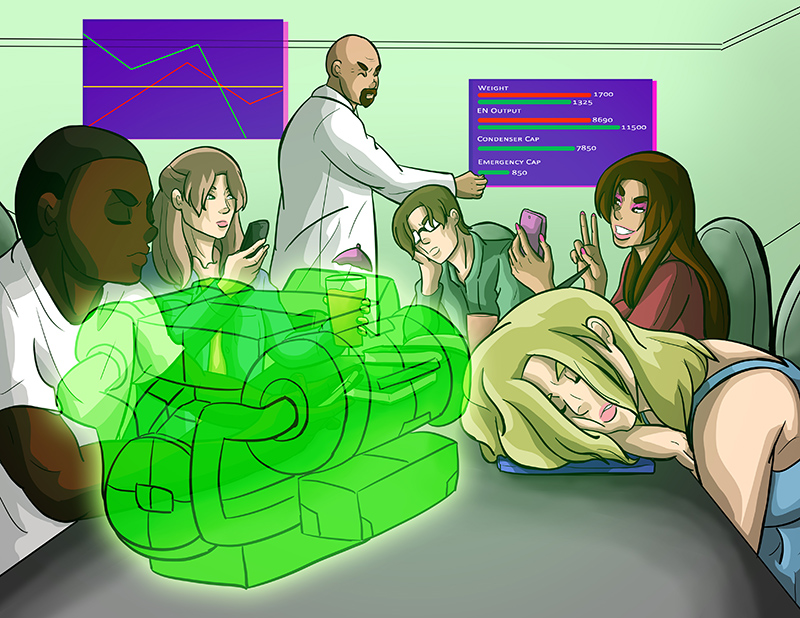
It’s important to start this off with pointing out that I am not a science buff. I enjoy fictional theoretical science, like making stuff up is fun. In no way do I think any of what I come up with would make practical sense in the real world. But that’s the point of fiction, isn’t it? To create a world to escape from the limitations of reality. To allow yourself a suspension of disbelief so you can enjoy the characters and the story being told. That being said, you do need to create a set of rules for your fictional world to adhere to. It may not have to make sense in reality, but in the scope of the world you’ve created, things should follow some guidelines. Hell, sometimes real world innovations were inspired by fictional elements! Happens all the time!
That all being said, I have created some theoretical guidelines and tech to help govern the world which Shattered Heaven inhabits. A lot of the tech below is based on current and theoretical tech, just given a bump by fictional “magic”. Down the line I will put together a document on Frames and the parts that make them up, but for now let’s cover the fundamental basics that allow the giant, customizable mechs of Shattered Heaven to work.
ARMORED CORE
The first thing a lot of people like to assume was the inspiration for Shattered Heaven is “Gundam”. It’s not. While it’s true Gundam helped influence the mech designs and the eventual growth to animation, it was the video game by FROM Software, Armored Core 2. I say “2” specifically because that was the first AC game I ever played. The game centered around making a custom mech through 1000s of part combinations. It was extremely grind and design centric which may have put off tons of people, but I loved it.
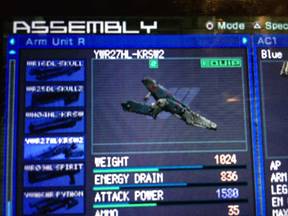
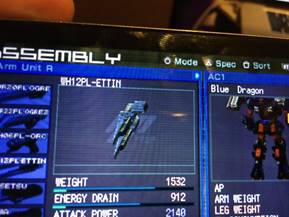
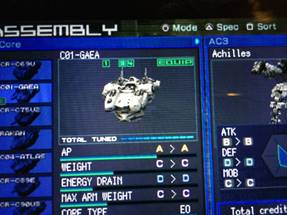
The above are taken from the PSP/Vita port of Armored Core: Last Raven, the final PS2 AC game made. Parts were given specific specs that were separated by different categories. Mechs were made up of a head, core, arm and leg units as well as internal parts like a generator for energy, radiator to handle cooling, fcs for radar and boosters. All of those in addition to weapons. There was a lot. It was this customization that allowed me to create hundreds of different mechs that would eventually become the base for Shattered Heaven.
With Armored Core as the main background, it was only natural that my approach to mechs would be centered around this idea of customization. Eventually when Gundam caught my interest, my art design was heavily influenced by the anime as well as parts from Armored Core. Blue Dragon’s main design was a mix of influence from the “GAEA” core, “Karasawa” energy rifle and others. The mechs of Shattered Heaven are essentially an amalgamation of Armored Core and Gundam.
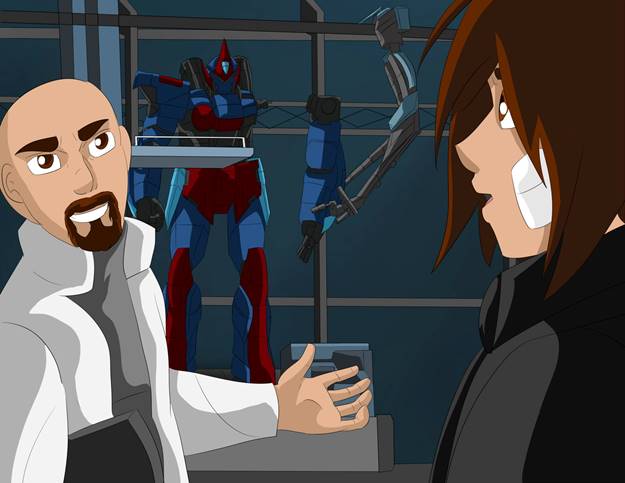
Mechs in Shattered Heaven
Mechs, known as “Frames” in Shattered Heaven follow the Armored Core main selling point, “customization”. In the world, pilots utilize the company, Genesis Global to create their own personalized mech. There are various parts that can be purchased and put together to create a mech that would best suit the individual pilot.
Creating a mech is a much thought out process of picking not just the right aesthetic, but also the most logical internal parts to power a soldier’s creation. I am planning on putting together a “Mech Catalogue” down the line that would have all the available parts for a soldier to choose from. Unfortunately, it’s extremely time consuming to create all the individual parts so there’s no specific time frame on that.
With the idea of how mechs work in Shattered Heaven it’s time to go over a basic breakdown of the individual parts that make them up.
Frame Weight on Average
Frame weight will vary based on the loadout, but on average they weight around 22 Metric Tons. Weight management is huge as leg units have individual weight capacities that limit just how much can be loaded onto a mech. In Armored Core, there was a weight penalty and in Shattered Heaven it’s no different. While a mech can be over the weight limit, their efficiency is severely stunted. This could lead into overheating and severe internal damage to a Frame’s base components.
Frame Propulsion
Thrusters on Frames are what allow the mech to move, whether on the ground or in the air. Not all Frames are created equally, different leg units have their own micro assist boosters that would in tandem with the main thruster pack, while certain leg units known as “hovers” have their own main thruster packs. Reverse jointed leg units have more powerful jumping abilities but reduced air boosting capabilities.
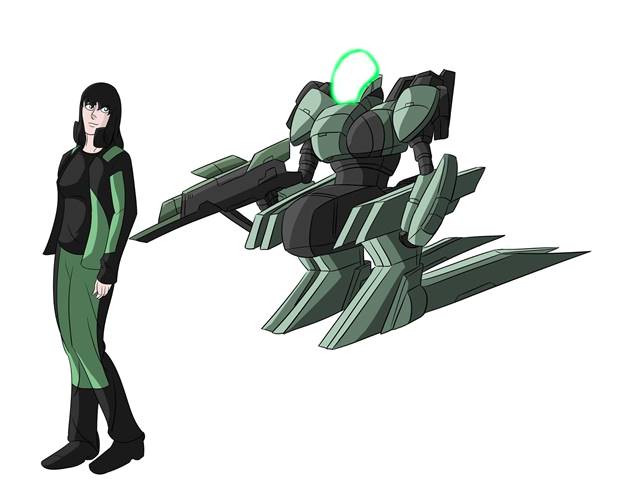
Sarah Henning and her hover type Frame, Sky Clover.
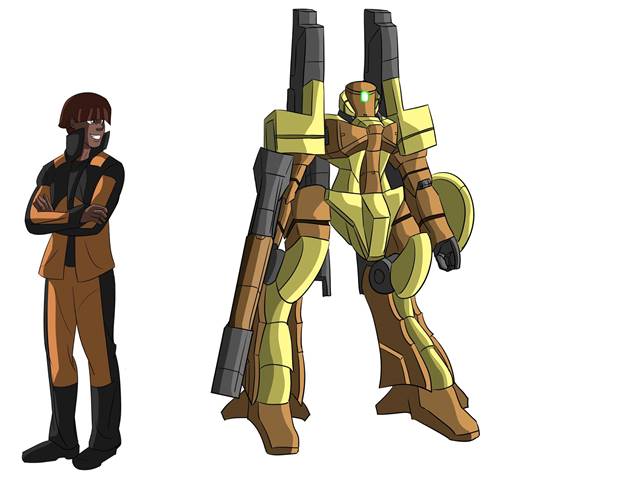
Chris Procella and his reverse jointed Frame, Tempest.
Here’s where the more pseudo science, fiction world aspect comes into play. While many of these are “real” in some form, they’ve been augmented to work as I see fit for Frame designs. The below thrusters are mainly for atmospheric flight, not for space.
Compact Fusion Pulse Propulsion Thruster (CFPP Thruster)
Even in the world of Shattered Heaven, nuclear fusion technology is still theoretical and rare. Higher combustion with a greater power output, a compact fusion thruster is mainly conceptual. But it is believed that Genesis Global has a working prototype of this powerful thruster.
Thrust Range: 180500 kg – 220000 kg
Individual: 90250 kg – 110000 kg
Hi-Nu Rotating Detonation Engine Thrusters (HnRDE Thrusters)
The most expensive and efficient thruster on the market, the HnRDE thruster is an enhanced version of the standard EPDE thruster. They have the highest output capabilities and come with a manageable energy drain.
Pseudo Science: A detonation wave travels through a circular channel to create a self sustaining energy detonation. It is initiated through a fuel/oxidizer mixture with an ignition switch utilizing highly malleable isotopes found on Mars. Unlike the EPDEs, these thrusters do not purge their energy chambers after each pulse. They can go much longer before refueling.
Thrust Range: (Low-end models) 86250 kg – (High-end models)110500kg
Individual 43125 kg – 55250 kg
Enhanced Pulse Detonation Engine Thrusters (EPDE Thrusters)
The standard and most cost effective thruster available to pilots. Like the HnRDE thrusters, EPDE’s create a supersonic detonation of fuel. The energy drain is higher and the fuel combustion forces the internal energy chambers to be purged after each wave. They can only be used for a short time before refueling is required.
Thrust Range: (Low-end models) 55000 kg – (High-end models) 75000kg
Individual 27500 kg – 37500 kg
Power Source/Generators
In order for all of the components in a Frame to work, a sufficient energy source is required. These are completely “Fiction”. The concepts are based on basic research, but they are completely fiction “magic”.
Compact Fusion Reactor
It is rare in the world, but it is assumed that Genesis Global has managed to create a safe version of this design. It has yet to be introduced to the public if that is the case.
Power Output : 3480-4260 kW
Neo H-Cell Generators
Hyper Proton Exchange Membrane Fuel Cell or H-Cell as it is commonly referred as to provide power to all the applications used. The H-Cell’s basic principle is that a single cell converts the chemicals hydrogen and oxygen into water, and in the process it produces electricity.
Power Output: 1,160-2100 kW
Each part that makes up a Frame is given an “Energy Drain” rating. This rating is a numeric value that when combined with the rest of the parts of the mech will give a pilot an estimation of their Frame’s total “Required Energy Usage”, the numeric value that has to be met by the generator for the Frame to function. If the REU value is “900kw” a generator that produces at least “900kW” would be needed to power the Frame.
Coolant Systems
When you have all these parts working to move a giant behemoth, then things are bound to get hot. In order to keep this from happening, a coolant system is put in place. Through the use of Radiators, Frames are able to keep their operating temperatures down to prevent overheating. A mix of a good coolant system and proper awareness from a pilot will prevent an overheating scenario.
Good coolant systems aren’t enough, in the heat of battle things can get out of hand. Not being aware of thruster energy levels and the heat they incur as well as how much energy is being used from the generator before it can be replenished can create catastrophic situations. All Frames are equipped with a CMS- Coolant Monitoring System.
CMS: A graphic representation of heating and energy levels with in the Frame. When approaching the “red bar”, an alarm warns the pilot of a potential “overheating” scenario.
Radiators: Control the cooling systems and monitor temperature of all components.
Coolant: Ethylene glycol (ethane-1,2-diol) is an organic compound with the formula (CH2OH)2.
If a Frame overheats, the generator will go into an emergency overdrive to force cool the entire mech. This causes the Frame to temporary go silent, leaving the pilot extremely vulnerable.
Types of Radiators
Pressurized Cooling Systems
A type of cooling system based on atmosphere pressure surrounding the Frame instead of temperature. This system will maintain the ideal heat capacity at a constant value, despite the outside air temperature. The problem with this system is that it is more susceptible to damage. Any damage from battle could create a coolant leak and lead to a generator failure.
Continuous Flow Systems
An expensive cooling system that relies on an active flow of Ethylene glycol to circulate through the Frame’s internal skeleton. The constant passing of the coolant keep everything at an optimal temperature to prevent overheating. While this is efficient at being proactive, if an overheating scenario were to occur, the down time of the Frame is significantly longer.
Computer/Operating Systems
The brain of the Frame.
FCS (Fire Control System): Onboard computer system that is made up of the radar and targeting devices.
Radar: Varies in computer sight range, lock-on capabilities in terms of single or multi lock for guidance weapons, lock acquisition speeds and electronic counter measure strength.
Sight Range: The range in meters in which the OS can scan the area for threats and to acquire target lock-ons.
Lock-on Type: Single or multi. Works with specific weapon types, whether multiple enemies can be locked on at the same time or if only one can be locked on.
Acquisition Speed: How quickly and efficiently a lock-on can be acquired.
ECM (Electronic Counter Measures): The level of efficiency an OS can work within areas that have electronic distortion or interference applied.
Frame Types
Frames are split into different categories based on their leg units.
Heavyweight: The highest weight/load capacity. These Frames are heavily armored with high defense, but are held back by severely low mobility.
Lightweight: Extremely low weight/load capacity. Very nimble and usually rely on their higher than average mobility.
Middleweight: The most balanced of the different Frame types. Decent weight/load capacity with good mobility.
Hover Type: Extremely low energy/thrust drain with high mobility. Low defense.
Reverse-Joint: Good armor, high jumping capabilities but poor air mobility. Mainly ground units.
This is merely a basic overview of how Frames work in the world of Shattered Heaven. There will be a more indepth look at the weapons, transport vessels, facilities and more as season 2 moves forward.

